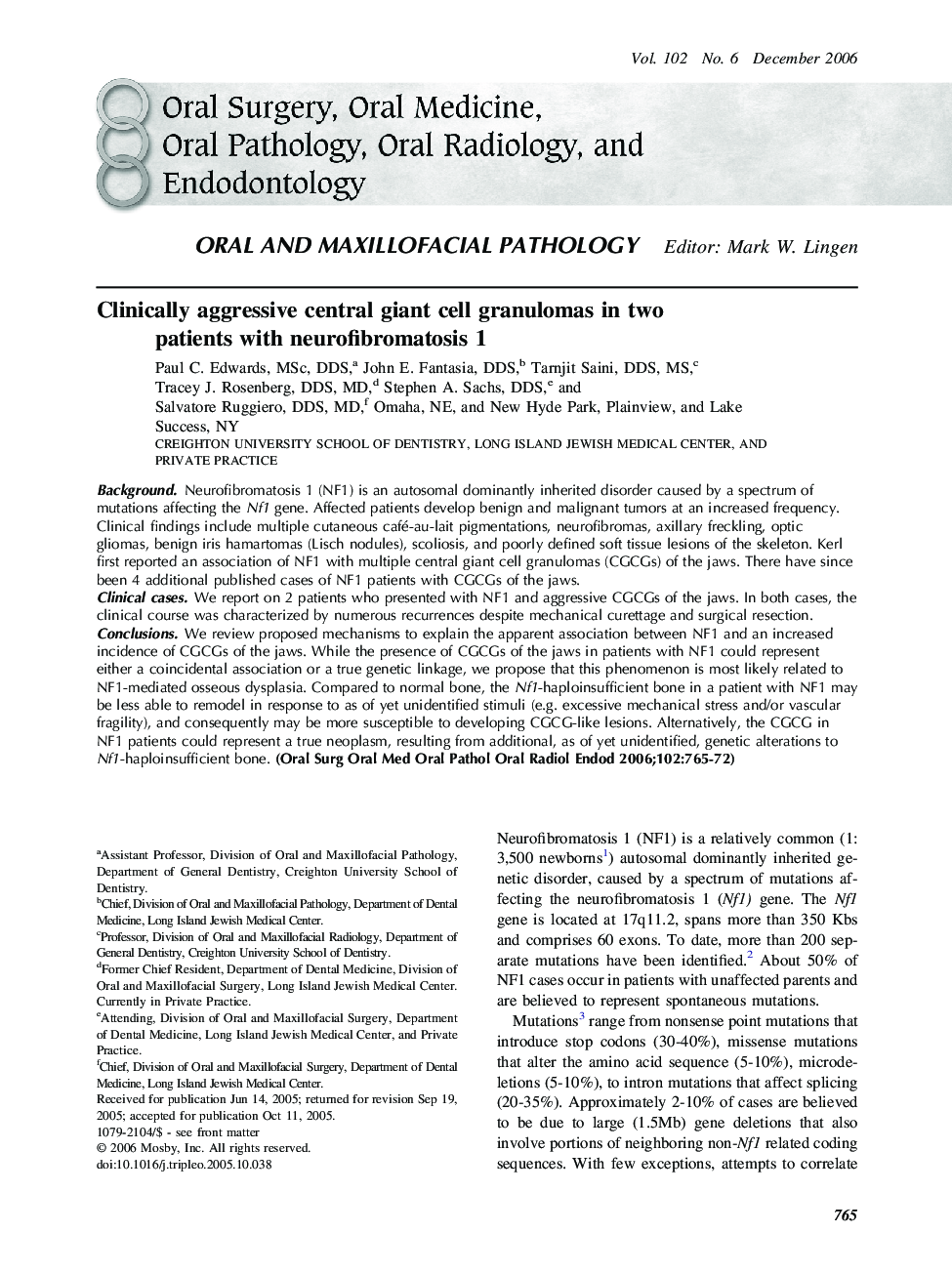| Article ID | Journal | Published Year | Pages | File Type |
|---|---|---|---|---|
| 3169715 | Oral Surgery, Oral Medicine, Oral Pathology, Oral Radiology, and Endodontology | 2006 | 8 Pages |
BackgroundNeurofibromatosis 1 (NF1) is an autosomal dominantly inherited disorder caused by a spectrum of mutations affecting the Nf1 gene. Affected patients develop benign and malignant tumors at an increased frequency. Clinical findings include multiple cutaneous café-au-lait pigmentations, neurofibromas, axillary freckling, optic gliomas, benign iris hamartomas (Lisch nodules), scoliosis, and poorly defined soft tissue lesions of the skeleton. Kerl first reported an association of NF1 with multiple central giant cell granulomas (CGCGs) of the jaws. There have since been 4 additional published cases of NF1 patients with CGCGs of the jaws.Clinical casesWe report on 2 patients who presented with NF1 and aggressive CGCGs of the jaws. In both cases, the clinical course was characterized by numerous recurrences despite mechanical curettage and surgical resection.ConclusionsWe review proposed mechanisms to explain the apparent association between NF1 and an increased incidence of CGCGs of the jaws. While the presence of CGCGs of the jaws in patients with NF1 could represent either a coincidental association or a true genetic linkage, we propose that this phenomenon is most likely related to NF1-mediated osseous dysplasia. Compared to normal bone, the Nf1-haploinsufficient bone in a patient with NF1 may be less able to remodel in response to as of yet unidentified stimuli (e.g. excessive mechanical stress and/or vascular fragility), and consequently may be more susceptible to developing CGCG-like lesions. Alternatively, the CGCG in NF1 patients could represent a true neoplasm, resulting from additional, as of yet unidentified, genetic alterations to Nf1-haploinsufficient bone.
